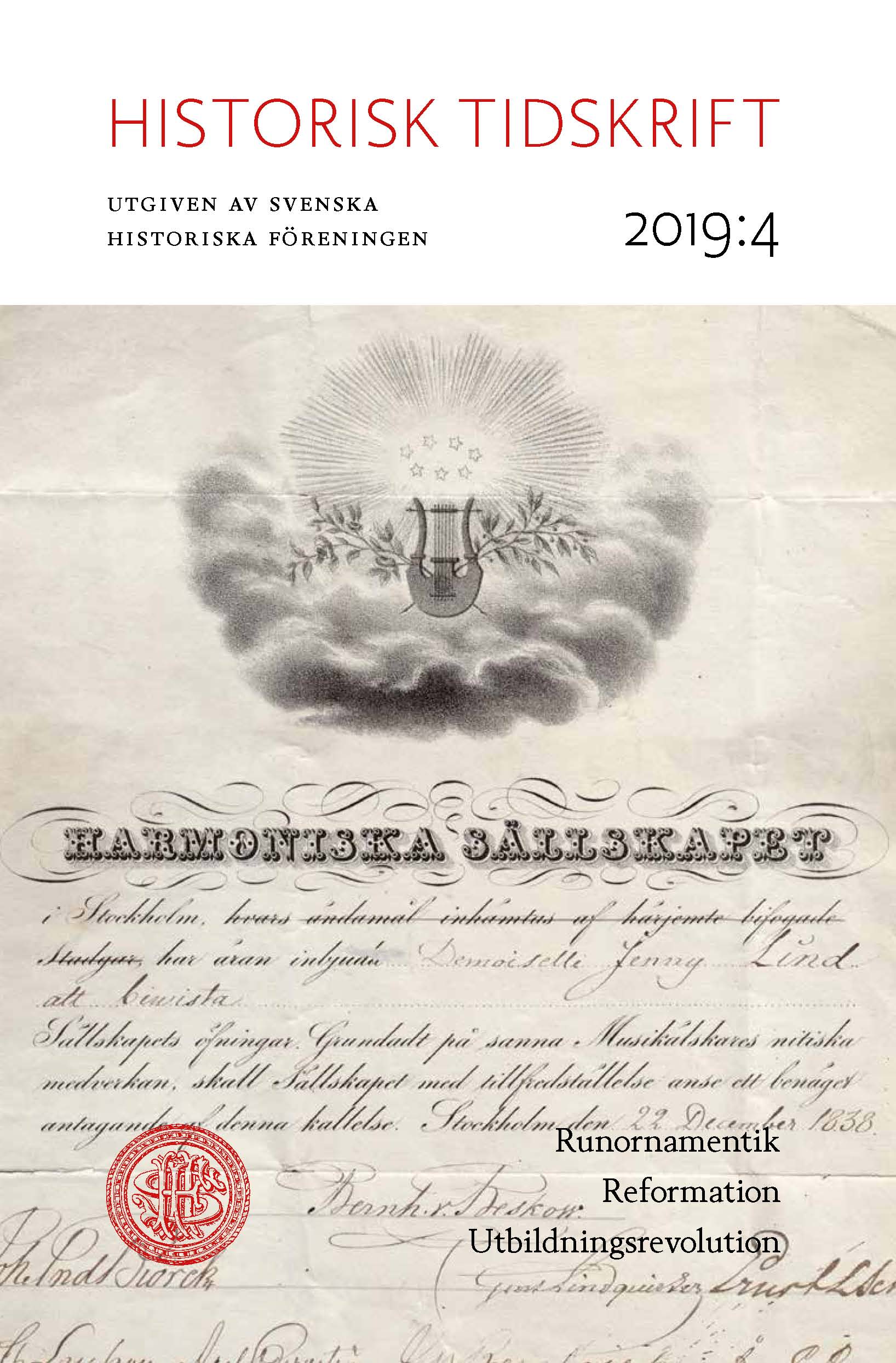Abstract
When did the Reformation end? Reformation, confessionalization and the representation of Martin Luther in Swedish 16th-century print
In the past decades, Swedish scholars have used the concept of the Reformation to refer to a long process of religious change in Sweden between 1527 and 1593. The influence from the term ”the long reformation” used in the Anglo-Saxon world is tangible. Instead, this essay argues for a temporally narrower concept of reformation, which clarifies changes and differences in the 16th century and places Sweden in a European context.
Representations (in text or images) of Martin Luther in 16th-century books for a Swedish reading audience are analysed with a view to how differences in representation reflect changes in religious life and society over the century. The article argues that the term ”the Reformation” should be reserved for the first half of the century and the struggle to reform what everyone at the time thought of as the universal church. In this period print was an arena where different views about Luther and the religious process of change were created and negotiated. The term ”confessionalization” should be used for the second half of the century, highlighting the aim to stabilize the various confessional churches and to consolidate and reinforce identities and shared values.
The article contrasts six years at the beginning of the period (1526–1531) with six years at the end of the period (1592–1597) to bring to light the difference between reformation and confessionalization. During the first period only three books directly represented Martin Luther by explicitly mentioning him. In the same period seven editions of books strongly connected to Luther (e.g. translations or adaptations of his works) could be identified. However, none of these mentioned Luther. This divergence between representation and reception of Luther is a typical feature of the Reformation outside the Holy German Empire. Luther was a controversial figure and there were competing interpretations of his thoughts.
The second period shows an almost opposite relationship between reception and representation. Out of six analyzed books which all translated or adopted Luther’s writing, five contain representations of Luther. Instead of hiding Luther, which was the norm in the earlier period, these publications draw attention to Luther. During the period of confessionalization a positive identification with Luther and his legacy became a characteristic of Swedish Lutheranism.
The Swedish Reformation was not laggard but followed a European pattern. It ended in mid-century when the period of confessionalization began. Hence, the year 1593, which in traditional interpretations marks the end of the Swedish Reformation, should be understood as part of the confessionalization process.

